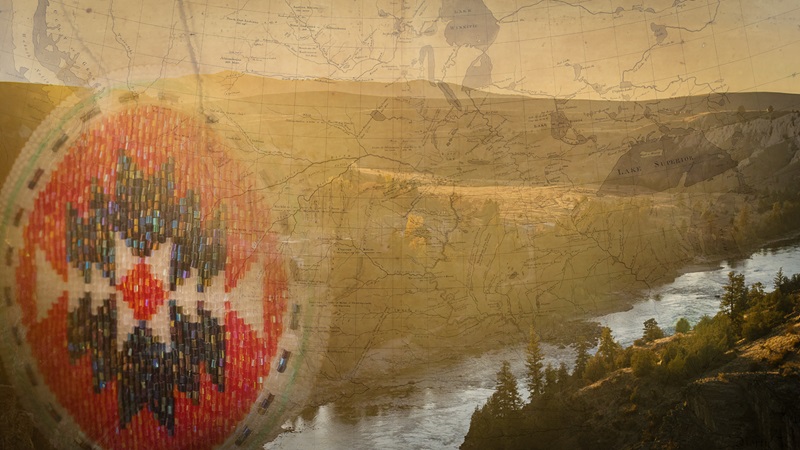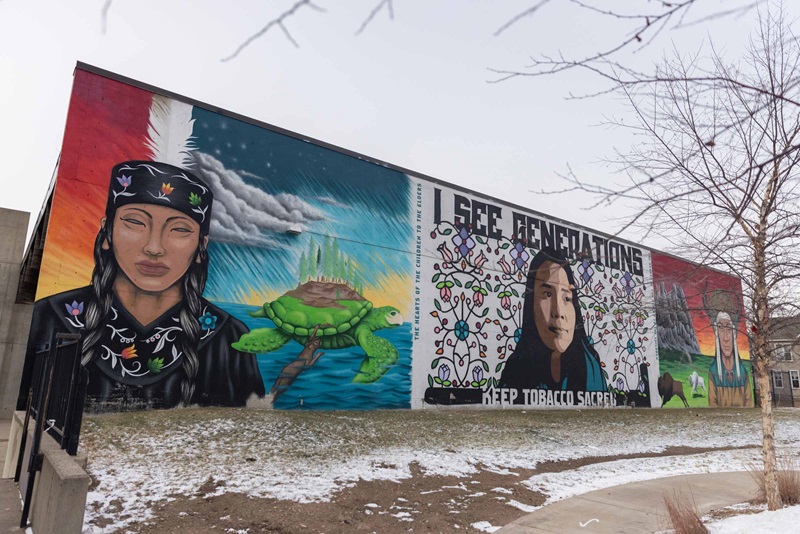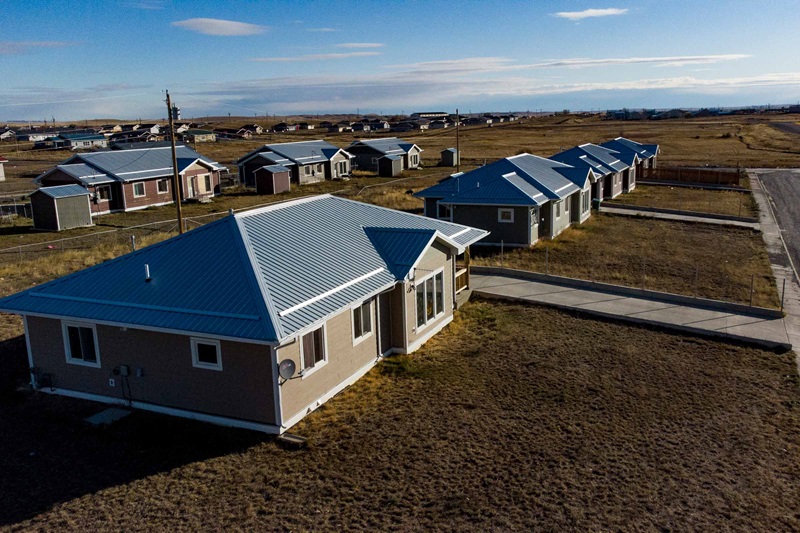
For Native peoples, “Indian Country” means homeland. The term reflects a relationship with the land that is deeply embedded in Native history and culture. In its broadest sense, Indian Country means anywhere that Native peoples have lived and continue to exist and thrive.
“Indian country” with a lowercase “c” holds specific meanings in legal and policy contexts. The term can be found throughout federal code and case law. Indian country encompasses specific definitions of Native land areas including reservations, trust lands, restricted fee lands, and other land categories. As a legal and administrative term, Indian country profoundly impacts the governing authority of tribes and the daily lives of Native peoples.
Native peoples also live and thrive in areas outside of the standard legal categories of Indian country. These include Native Hawaiian trust lands, the lands of Alaska Native Corporations, state-recognized American Indian reservations, and Native statistical areas. While not part of the primary statutory definition of Indian country, these Native land areas hold unique legal and administrative status. They play a critical role in the implementation of policies that impact Native peoples.
Understanding the experience and legal rights of Native Americans requires familiarity with the term “Indian C/country” and related concepts. An overview of the term—and the modern implications for Native peoples’ land and sovereignty—is available in a paper from Center for Indian Country Development (CICD) Senior Policy and Legal Advisor Andrew Huff. Following is an introduction to this more detailed work.
Indian Country
The term “Indian Country,” in the broadest sense, means anywhere that Native peoples have lived and continue to live. This includes the ancestral or traditional territories of Native peoples. Prior to contact with Europeans, an array of Native societies had long endured and thrived throughout the Western Hemisphere. Native traditions, languages, and histories describe the Indigenous presence in these lands from time immemorial. Native peoples maintained diverse languages and cultures, extensive trading networks, well-developed societies, and defined homelands and territories.
No matter where you live in the Americas, you are likely on lands once occupied, shaped, and safeguarded by a Native nation.

Indian country
“Indian country”—typically written with a lowercase “c”—is a legal and administrative term under federal law that profoundly affects the daily lives of Native peoples. The concept impacts regulatory authority within reservations, defines eligibility for grant programs, determines which government prosecutes certain crimes, and affects property inheritance and rights-of-way. It determines ownership of natural resources, and factors into management of hunting and fishing rights. The term touches nearly every aspect of Native peoples’ lives.
The primary statutory definition of Indian country is found in title 18 of the United States Code at section 1151 (18 U.S.C. §1151):
[T]he term “Indian country,” as used in this chapter, means (a) all lands within the limits of any Indian reservation under the jurisdiction of the United States Government, notwithstanding the issuance of any patent, and, including rights-of-way running through the reservation, (b) all dependent Indian communities within the borders of the United States whether within the original or subsequently acquired territory thereof, and whether within or without the limits of a state, and (c) all Indian allotments, the Indian titles to which have not been extinguished, including rights-of-way running through the same (emphasis added).
Key concepts in this statutory definition are highlighted below. Additional historical and technical land definitions associated with “Indian country” are detailed in the accompanying paper.
Reservations
Reservations are the first category of Indian country included in the primary legal definition. After the U.S. Constitution was ratified in 1789, the federal government entered more than 350 treaties with tribes—mainly for the purpose of regulating commerce and obtaining Native lands. In treaty negotiations, tribes relinquished their claim to large areas of their ancestral territory in exchange for retaining control of “reservations”—smaller areas of their lands with clearly marked borders.
Although treaties set forth the federal government’s solemn commitment to protect Native lands and self-government, the demand for land and resources often overrode treaty terms. By 1830 wholesale removal of tribes in the eastern United States from their treaty-protected lands became the favored federal policy.
In 1887, the U.S. Congress again acted to obtain Native land by passing the General Allotment Act. The act opened reservations for non-Native settlement and led to the transfer of an estimated 60 percent of Native lands into non-Native ownership. The reservations of today are what remain after the removal and allotment eras.
Dependent Indian communities
Dependent Indian communities are the second category of Indian country included in the main legal definition. As interpreted by the U.S. Supreme Court, the term refers to Native lands that are not reservations or allotted lands (smaller parcels of lands held in trust or restricted fee status), but that have been set aside by the federal government for the use of Native Americans under continuing federal superintendence (management). For example, Pueblo communities have been held to be “dependent Indian communities” and therefore “Indian country,” although their lands are held in fee title and are not part of a reservation.
Indian allotments: Trust and restricted fee parcels

Allotments are the last category of Indian country lands referenced in the main definition of Indian country found in federal code. In the latter half of the 19th century, the treaty-protected lands of removed eastern tribes and the treaty-protected lands of western tribes attracted the attention of homesteaders, miners, and others. Congress enacted laws opening treaty-protected lands for non-Native occupation.
The term “trust land” came into common use after Congress passed the General Allotment Act—also known as the Dawes Act—in 1887. The act subdivided reservations into allotments that were assigned to Native individuals for use as small farms. The federal government held these allotments in trust for 25 years—a period during which an allotment could not be sold or taxed. The trust period could, in certain circumstances, be changed. Importantly, the act also authorized the transfer to non-Natives of any reservation lands remaining after allotments were assigned to tribal members.
After the General Allotment Act, Congress enacted dozens of allotment acts specific to certain tribes. Some of these acts distributed lands to tribal members to be held in “restricted fee” title status, rather than in trust by the federal government. Allotments in restricted fee status are owned by the Native allottee but, like trust allotments, are subject to restraints on sale and taxation.
Between 1887 and 1934, the federal government redistributed an estimated 90 million acres of Native land to non-Natives under the allotment statutes. In 1934, Congress ended allotment and permanently extended the trust status of the remaining Native lands. Today, the results of allotment can be seen within reservations characterized by a checkerboard pattern of land ownership, with non-Native-owned lands interspersed with Native-owned allotments and fee simple lands.
“Indian country” for jurisdictional purposes
Federal, state, and tribal governments use the statutory definition of “Indian country” at 18 U.S.C. §1151 to determine the boundaries of their governing authority in civil and criminal matters. Although the term is defined in statute, in practice the definition has not resulted in jurisdictional clarity.
Federal law divides Indian country jurisdiction between three governments: federal, state, and tribal. The allotment era resulted in a mix of tribal members and non-members living on legally different kinds of land within Indian country. Depending on who is involved, what activity is occurring, and on what type of land, jurisdiction over the people and activities in Indian country can be exclusive to one government, overlapping between governments, or in conflict or unclear.
Other Native land areas
Many forms of Native land exist outside the narrow categories of “Indian country” defined in 18 U.S.C. §1151. Other Native land areas with unique legal or administrative status include the following.
Native Hawaiian trust lands
Native Hawaiians have long inhabited the Hawaiian archipelago as a self-governing people. In 1893, the Kingdom of Hawaii was overthrown by private landowners and elements of the U.S. government and military. The welfare of Native Hawaiian people steeply declined following the overthrow of their government and the subsequent seizure of their traditional lands.
Congress passed the Hawaiian Homes Commission Act in 1921, placing 200,000 acres of land into trust for Native Hawaiians’ use as homesteads. When Hawaii became a state in 1959, the act was incorporated into state law, and trusteeship of the lands passed to the state. The act is now implemented primarily through state legal mechanisms, with some federal oversight through the U.S. Secretary of the Interior.
Lands of Alaska Native Corporations

The Alaska Native Claims Settlement Act (ANCSA) of 1971 established Alaska Native Corporations (ANCs) as the primary owners of Native lands in Alaska. As compensation for revoking their existing reservations and title to traditional territories, totaling some 365 million acres, Alaska Natives received $962.5 million and the right to select 44 million acres of land to be owned by ANCs. The act established approximately 200 village corporations and 12 geographic regional corporations chartered under state law. Alaska Natives are shareholders in these corporations. These lands are exempt from real property taxes as long as they are not developed, leased, or sold to third parties.
State-recognized American Indian reservations
Dozens of tribes throughout the United States are recognized under state law rather than federal law. As of spring 2023, CICD has documented 14 states with state-recognized tribes. The reasons these tribes lack federal recognition vary depending upon each tribe’s unique historical circumstances. For example, a tribe may have chosen not to sign a treaty it understood as unfavorable. Other treaties were never approved by Congress. During the removal era, some tribes were splintered geographically and politically, creating tribal communities that would later be state-recognized. The meaning and scope of state recognition varies among states, but generally qualifies the recognized tribes for state grants and other benefits. In some states, state-recognized tribes maintain certain powers of self-government.
Some of these tribes own land like any other private landowner. Some states recognize certain areas as reservations for these tribes. State law determines the legal characteristics of these reservations, including property tax treatment.
Native statistical areas
Most federal agencies rely on the definition of “Indian country” at 18 U.S.C. §1151 in their work with Native peoples. Many federal statutes also combine differing categories of Indian country in defining the scope of a particular program. Some federal agencies have developed their own administrative categories of Native land areas.
The U.S. Census Bureau, for example, developed “tribal statistical geographies” to collect information on Native peoples living in areas that do not fall into standard Indian country categories, including state-recognized tribes without a reservation, Alaska Native village areas, certain Oklahoma tribal areas, and federally recognized tribes without a reservation or trust land. These statistical areas are a vital tool for data collection and federal program administration.
For more detail on Indian C/country-related concepts and source information, see the accompanying paper.

